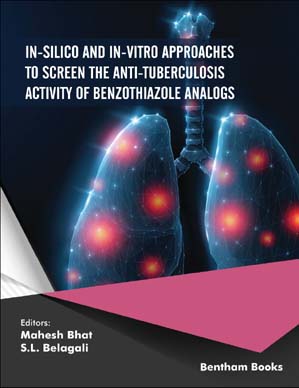In-Silico and In-Vitro Approaches to Screen the Antituberculosis Activity of Benzothiazole Analogs

Abstract
This monograph presents information about the history and evolution of tuberculosis treatment, and the potential of the benzothiazole moiety for anti-tuberculosis (anti-TB) activity. The book introduces the reader to basic information about benzothiazole as a drug candidate before delving into the anti-tubercular properties of derivative compounds in subsequent chapters. The contributors explain quantitative structural-activity relationships of benzothiazole with anti-TB activity along with the importance of in-silico (computer aided) techniques in the drug design process. This is followed by a chapter which details Mycobacterium tuberculosis biology, strains as well as symptoms of tuberculosis infections. The book then explains in-vitro and in-vivo methods used to evaluate drug efficacy against tuberculosis along with the synthesis and anti-TB activity of the benzothiazole derivatives (benzothiazole diamide, benzothiazole guanidinyl derivatives and benzothiazole conjugated pyrazole derivatives).
This book, therefore, is a quick reference on TB diseases, methods of in-silico and in-vitro screening of anti-TB drugs and the importance of the benzothiazole in TB treatment regimens. The book is suitable for readers, researchers and post graduate students who are interested in general tuberculosis drug design, screening and discovery, as well as the application of benzothiazole as an anti-TB drug.

